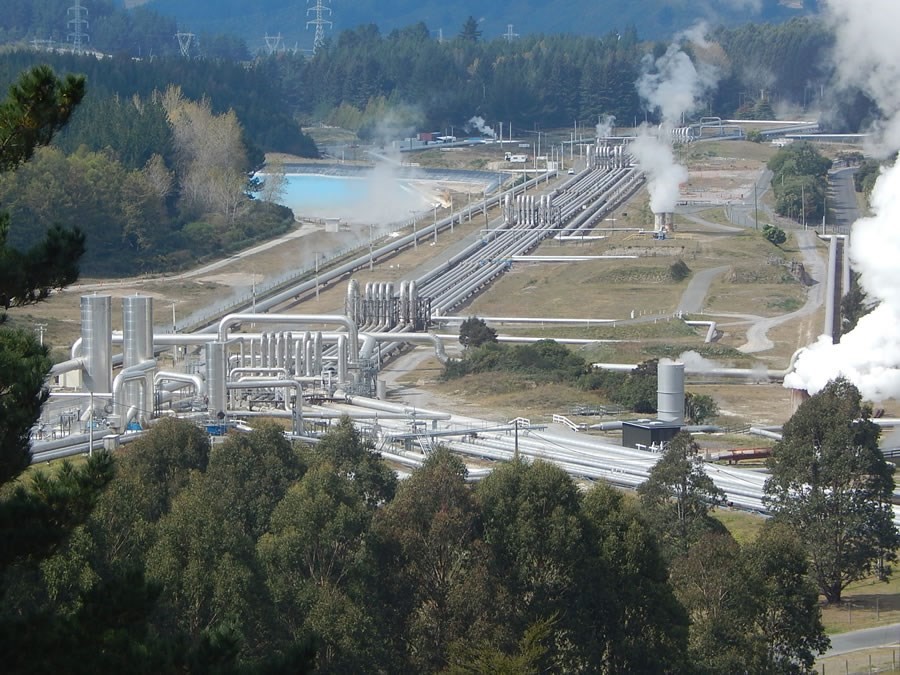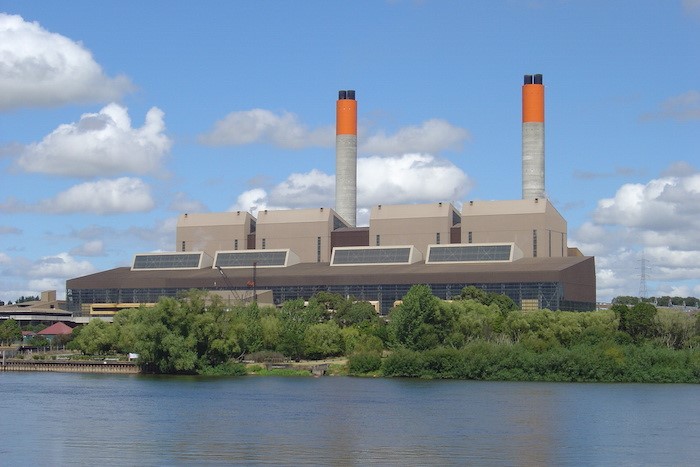It’s the evening at home while I write this. The central air conditioning is on. Powered by Genesis Energy [NZX:GNE]. I do dread the bill, but I reason that it will be worth it for the respite from Auckland humidity. For the extra productivity and insights I should be able to deliver to you from a cool, calm environment. We’ll see…
New Zealand power companies still pay a great dividend. So much so, international investors have also been drawn to them.
In fact, in December 2020, we noticed asset management giant BlackRock [NYSE:BLK] now owns around 11% of Contact Energy [NZX:CEN].
So, is it still worth investing in the local big e-tailers? In particular, this week, I want to look at two potential income-focused investments:
- Contact Energy [NZX:CEN]
- Genesis Energy [NZX:GNE]
And the time to do this is now.
For one thing, the second-term Labour government (supported by the Green Party) is climate-focused. They’re eyeing renewable generation, solar at home, and potentially no new vehicles sold next decade unless they’re EVs.
We’ve learnt a couple of things from monitoring Australia’s largest generator — AGL Energy [ASX:AGL]. And also from National Grid [LSE:NG] in the UK, which may apply here:
1) The market hates dirty (coal/gas) generation and will even punish a solid value stock if it relies on it.
2) The market is sceptical on the speed at which a generator can turn renewable, even with hefty investment.
3) Electricity demand on the grid tends to be falling in developed markets. But EV impetus could help boost it somewhat — though not as much as you may think.
4) Large utility businesses are subject to regulation and ongoing government monitoring. There are often caps in where they can go and what they can achieve.
Well, let’s take a look at these two big, solid Kiwi generators. Are they dividend dreams or harbingers of a changing future where less power may be needed? Will we start monitoring? Or add them to our Watch List?
Contact Energy
 |
Contact Energy is one of NZ’s leading geothermal generators. Source: Henessy |
Let’s begin with financial fundamentals. Compared to Genesis Energy and AGL Energy (Australia):
| Contact | Genesis | AGL | |
| Market cap: | $6.072b | $4.049b | A$7.13b |
| Dividend yield (gross): | 5.96% | 5.75% | 8.56% |
| P/E ratio: | 46.75 | 87.61 | 7.3 |
| Price/Book: | 2.3 | 2.4 | 0.9 |
| LT debt/equity: | 37.37% | 65.1% | 38.02% |
| Return on equity: | 4.6% | 2.2% | 12.3% |
| Net margin: | 6% | 1.8% | 8.3% |
| 5Y Revenue growth: | -3.2% | 4.3% | 2.6% |
| Beta: | 1.037 | 1.114 | 0.483 |
IB TWS and NZX figures as at 2 February 2020
By earnings, both Contact and Genesis seem expensive compared to AGL. Genesis, especially — and it’s carrying more debt. But, as mentioned, AGL is discounted due to the investor-coal penalty.
Should Contact Energy’s stock price sit as expensive as it is? Let’s take a look.
- Contact is one of New Zealand’s largest electricity generators.
- In 2014, it generated 23% of the country’s electricity — second only to Meridian.
- Attractive for ESG investors is that 84% of its generation is renewable. This obviously provides it greater share price tailwind — as opposed to AGL Energy, which is attempting to transition from coal.
A recent boost for Contact came in the form of an announcement on Tiwai Point smelter. Earlier this month, owner Rio Tinto announced a deal with Meridian Energy to keep it open until the end of 2024. Contact stepped in to provide Meridian some of the electricity the smelter requires.
‘Contact will provide an average of 100 megawatts of baseload electricity through until the end of 2024 (assuming the smelter requires 572 megawatts of electricity),’ the company said in a statement to the NZX.
To put that demand in perspective, Contact’s Clyde Dam station on Lake Dunstan is the largest in its network providing up to 432 megawatts of power. And it is a key asset from Rob Muldoon’s ‘Think Big’ projects of the 1970s.
This is particularly welcome news for Contact, since over the past 5 years, revenue from generation has been shrinking.
Contact also sits in a strategic position thanks to its geothermal assets. While hydro can depend on river levels, geothermal tends to be more efficient, consistent, and reliable. It can more easily accommodate changes in electricity demand.
Yet there remain concerns with Contact Energy’s current share price:
- The Tiwai Point smelter will stay until December 2024. Then it may close. This only buys time to give Contact (and other generators) time to adapt to lower demand in the South Island.
- Wholesale electricity prices are high and may not be sustainable. Especially as new sources of electricity supply emerge, such as solar and wind.
- For now, the dividend seems stable. But shareholders need to follow carefully results announcements (the next is expected on 15 February).
That said, as a primarily renewable generator with a strong dividend history, Contact will likely remain favourable in a low interest-rate environment.
I’m a long-run Contact shareholder. And will be holding for the dividend — since my average entry price is only around $4.80.
Would I pay $8.40+ for the share?
Not me, personally. I see better opportunities offshore.
Yet were earnings to increase or the share price to fall — such that P/E sat below 25, around half of where it is currently at — that may be a different story.
But for that to happen, either earnings would need to jump. Or the share price would have to tumble.
Genesis Energy
 |
Genesis thermal station at Huntly. Source: Theta |
I’m a little surprised Genesis has held its strong share price as long as it has. But consider the alternatives:
- With a stable dividend (so far) at nearly 6%, this is favourable compared to bank term deposits (0.35 to 1% p.a.). Or residential property investments with tight yields and growing regulatory burden.
- Genesis accounts for more than 15% of New Zealand’s electricity output and controls around 25% of the retail market.
- It is part of the oligopoly in New Zealand’s electricity market — as is Contact — so has some moat.
Yet it is also a Company with some challenges.
Currently, it is one of the top provides of LPG, where it is #1 or #2 in every region. Yet this fuel source has already come under fire as one to cut back on by the Climate Commission.
Then there is Genesis’ baseload thermal generation, using coal and gas. Its 953-megawatt Huntly station is the largest electricity-generation facility in the country. It has two gas fired and two gas/coal fired generating units.
In comparison, its renewable generation from hydro schemes includes Tongariro (361.8 MW), Waikaremoana (138.0 MW) and Tekapo (179.0 MW). An extra 7.3 MW comes from the wind farm at Hau Nui in the North Island.
Although the Company claims that renewables are displacing baseload thermal, for now, the key generation asset is Huntly. This station relies on fossil fuels. Genesis also owns 46% of the Kupe oil and gas field.
Of course, thermal generation is still needed in New Zealand. Renewable generation fluctuates according to the weather. And with a growing population, it rarely provides enough to fulfil demand year-round. Hence Genesis has some strategic positioning in this market.
Yet it strikes me that Genesis has similar challenges to AGL. The need to transition from a fossil-fuel business to a renewable one. And that poses many challenges.
But it’s hard to justify Genesis at a P/E of 87 when AGL can be entered at a P/E of below 8. And currently has a dividend yield 300 basis points higher.
This could be the New Zealand rip-off factor.
Asset prices in shares and property that far exceed any measure of their real value. Due to a lack of options, a lack of supply and the perception that this country is a safe haven from global demise.
There you have my ‘back of the envelope’ review of these two key power companies. In my opinion — and that is all it is — I would consider:
- AGL has some fair value despite its transition risks (from thermal to more renewable) and could provide a value alternative with income.
- Genesis appears overvalued — unless the Company can grow earnings while transitioning more quickly to renewable generation. And retaining its strategic position in the process.
- Contact is expensive, though the dividend and renewables focus are attractive. Be careful of share-price growth without underlying earnings growth.
The oligopoly moat factor does increase the value of these companies. And there could be further upside with societal move to EVs. But for those companies with high share prices in relation to earnings, the savvy investor should consider with caution.
As an investor, I like income. But income with growth is the ultimate goal here.
So we’ll keep hunting for both.
Regards,
Simon Angelo
Editor, Wealth Morning
Important disclosures:
Simon Angelo owns shares in Genesis Energy [NZX:GNE], Contact Energy [NZX:CEN], AGL Energy [ASX:AGL], and National Grid [LSE:NG] via Wealth Manager Vistafolio.





Simon is the Chief Executive Officer and Publisher at Wealth Morning. He has been investing in the markets since he was 17. He recently spent a couple of years working in the hedge-fund industry in Europe. Before this, he owned an award-winning professional-services business and online-learning company in Auckland for 20 years. He has completed the Certificate in Discretionary Investment Management from the Personal Finance Society (UK), has written a bestselling book, and manages global share portfolios.